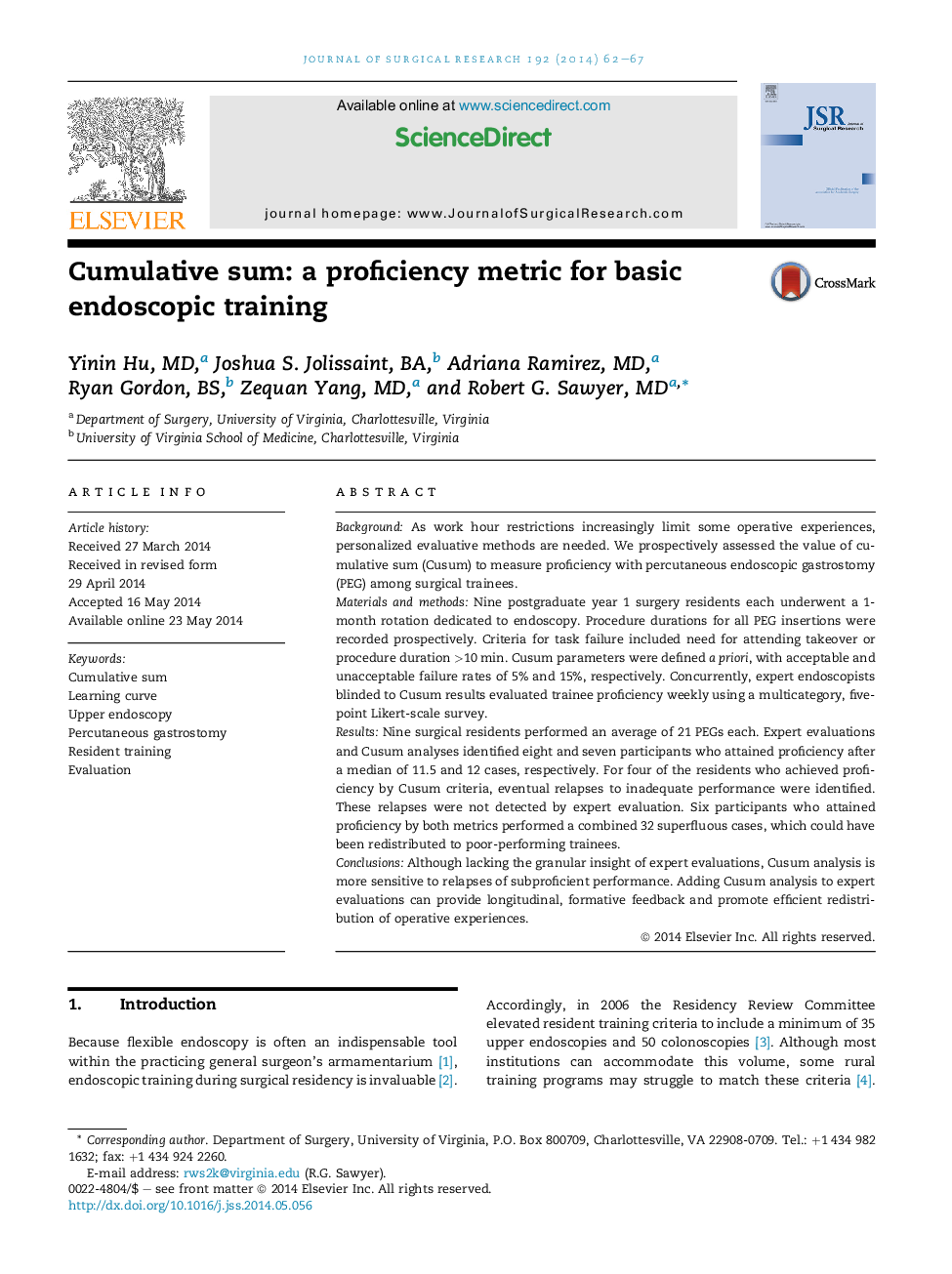| Article ID | Journal | Published Year | Pages | File Type |
|---|---|---|---|---|
| 4300065 | Journal of Surgical Research | 2014 | 6 Pages |
BackgroundAs work hour restrictions increasingly limit some operative experiences, personalized evaluative methods are needed. We prospectively assessed the value of cumulative sum (Cusum) to measure proficiency with percutaneous endoscopic gastrostomy (PEG) among surgical trainees.Materials and methodsNine postgraduate year 1 surgery residents each underwent a 1-month rotation dedicated to endoscopy. Procedure durations for all PEG insertions were recorded prospectively. Criteria for task failure included need for attending takeover or procedure duration >10 min. Cusum parameters were defined a priori, with acceptable and unacceptable failure rates of 5% and 15%, respectively. Concurrently, expert endoscopists blinded to Cusum results evaluated trainee proficiency weekly using a multicategory, five-point Likert-scale survey.ResultsNine surgical residents performed an average of 21 PEGs each. Expert evaluations and Cusum analyses identified eight and seven participants who attained proficiency after a median of 11.5 and 12 cases, respectively. For four of the residents who achieved proficiency by Cusum criteria, eventual relapses to inadequate performance were identified. These relapses were not detected by expert evaluation. Six participants who attained proficiency by both metrics performed a combined 32 superfluous cases, which could have been redistributed to poor-performing trainees.ConclusionsAlthough lacking the granular insight of expert evaluations, Cusum analysis is more sensitive to relapses of subproficient performance. Adding Cusum analysis to expert evaluations can provide longitudinal, formative feedback and promote efficient redistribution of operative experiences.
